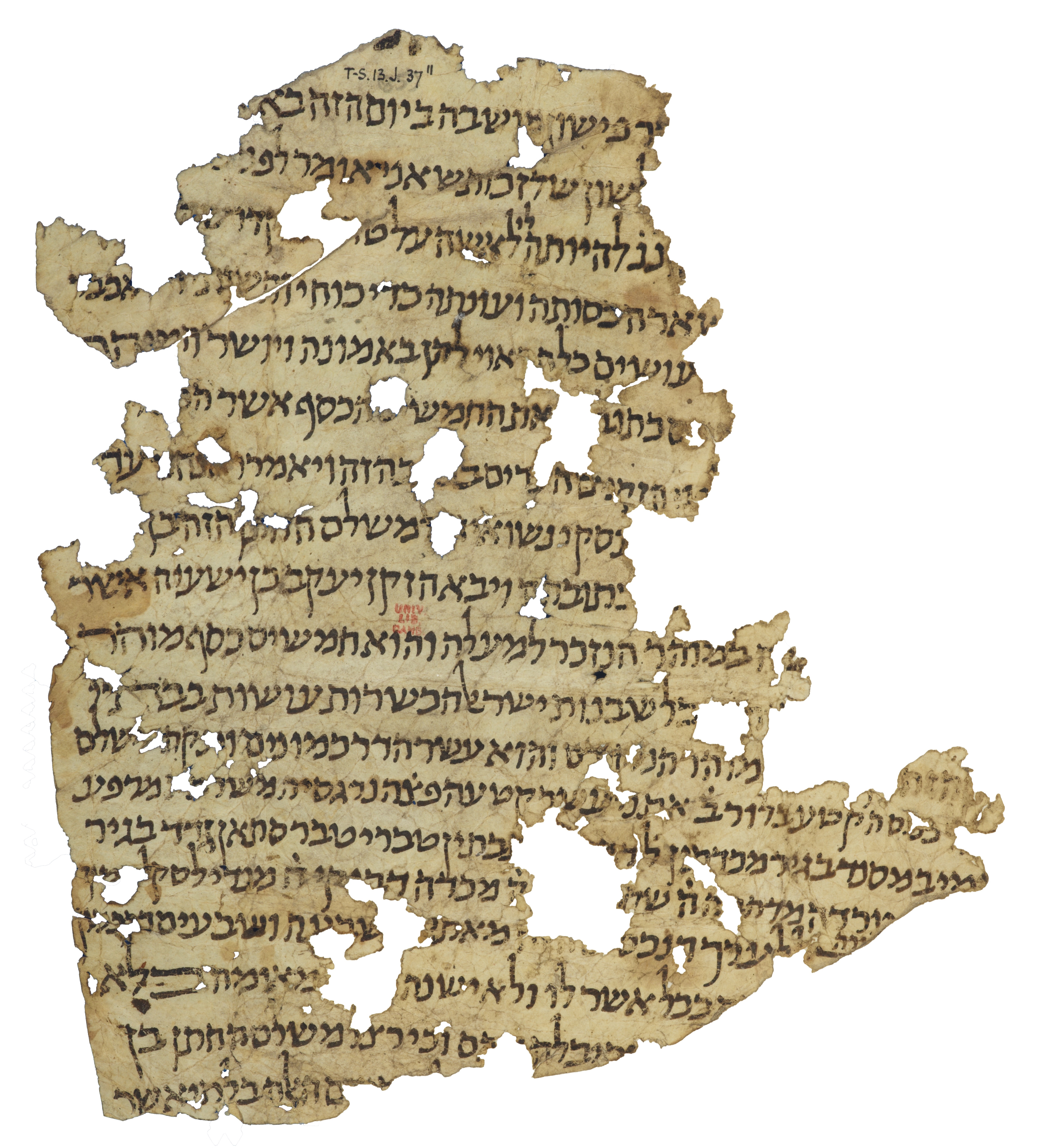Throwback Thursday: Karaite ketubbot

T-S 13J37.11 (recto): one of the rare Egyptian Karaite marriage contracts discussed in this article
Thu 30 Sep 2021
Our Throwback Thursday this week is taken from issue 31 of the printed edition of Genizah Fragments, published in April 1996, by Judith Olszowy (now Olszowy-Schlanger)
As is well known, the Karaites have existed as an independent Jewish sect since their establishment in Babylonia around the eighth century. They have distinguished themselves from Rabbanite mainstream Judaism by rejecting the oral tradition, as recorded in the Talmud, and by considering the Bible as their exclusive source of legal authority. The Jewish marriage contract, the ketubbah, is not explicitly mentioned in the Hebrew Bible but forms a part of the oral tradition. The Karaites have nevertheless considered it as a necessary condition for their marriages and have made use of it through the ages, but with some notable features of their own. Thanks to the discovery of the Cairo Genizah, a number of mediaeval Karaite ketubbot are now known to us. A few of these have been published or mentioned in other contexts by previous scholars, but the topic has never been studied in depth. After spending several months reading through thousands of manuscripts from various parts of the Taylor-Schechter Collection, I have been able to identify nearly fifty Karaite marriage and betrothal contracts. Due to their fragmentary and damaged state, however, the date and provenance of many of these documents are difficult to ascertain. The manuscripts in which the date and location clauses have been preserved inform us that they were written either in Egypt or in Eretz Israel. The most ancient marriage contract from the Genizah, which is also the oldest Karaite ketubbah known to us, dates from the tenth century. Its poor physical condition makes it impossible to be more precise, since only the beginning of the date has been preserved. The most recent Karaite contract in the collection was written at the very beginning of the thirteenth century. Karaite and Rabbanite marriage contracts may be distinguished from each other in three main areas: palaeography, language and formula tradition. As far as palaeography is concerned, the Karaite tradition of writing the ketubbot involves the use of clear, monumental Hebrew square script, comparable to that used in the manuscripts of the Bible itself. The Rabbanite ketubbot from the Genizah, on the other hand, are usually written in a more specific, quasi-cursive script, often with double spacing between the lines of the manuscript. The language of the Karaite ketubbah is its most distinctive feature. Unlike the Rabbanite marriage contracts, which are traditionally written in Aramaic, those of the Karaites – who were attempting to conform to the ketubbah tradition of the Bible – were written exclusively in Hebrew, and in a style heavily inspired by the Bible. As for the formulae, the Karaites were undoubtedly influenced by those included in the Talmud and in the Aramaic contracts of the Rabbanites. In addition, a unique feature of the Karaite tradition is the attempt to use biblical verses (mainly from the Torah) as binding legal formulae. Other distinctive aspects of the Karaite ketubbah include the mention of the Nasi (leader of the Karaite community) at the beginning of the document; and the dating of the marriage according to the Seleucid era, known as Mispar Yevanim, “Counting of the Greeks”. It is explicitly stated that the bride is represented by a proxy called paqid; that the additional marriage payment (mohar) is divided into advanced and delayed portions; and that both groom and bride commit themselves specifically to observe Karaite religious customs The Karaite marriage contracts from the Taylor-Schechter Collection constitute a unique source of information about various aspects of Jewish life in the Middle Ages. Much information can be gathered from them about the history of Karaite communities in Egypt and Eretz Israel, and notably about the names and genealogies of the Karaite Nesi'im who stood at their head. The presence of the formulae inspired by the Rabbanite tradition casts a new light on the relations between Karaites and Rabbanites in the field of Jewish religious law, indicating that polemical attitudes did not rule out cultural borrowing. At the same time, these documents highlight distinctive aspects of the Karaite faith. It is thus a contractual marriage obligation on both parties to abide by the Karaite calendar. Unlike the Rabbanites, who use calculation for the calendar, the Karaites fix Rosh Hodesh according to the appearance of the new moon, and the date of Passover according to the ripening of barley in Eretz Israel. The Karaites’ use of Hebrew in their legal documents provides a remarkable source for our understanding of the development of the Hebrew language in the Middle Ages.
Add new comment